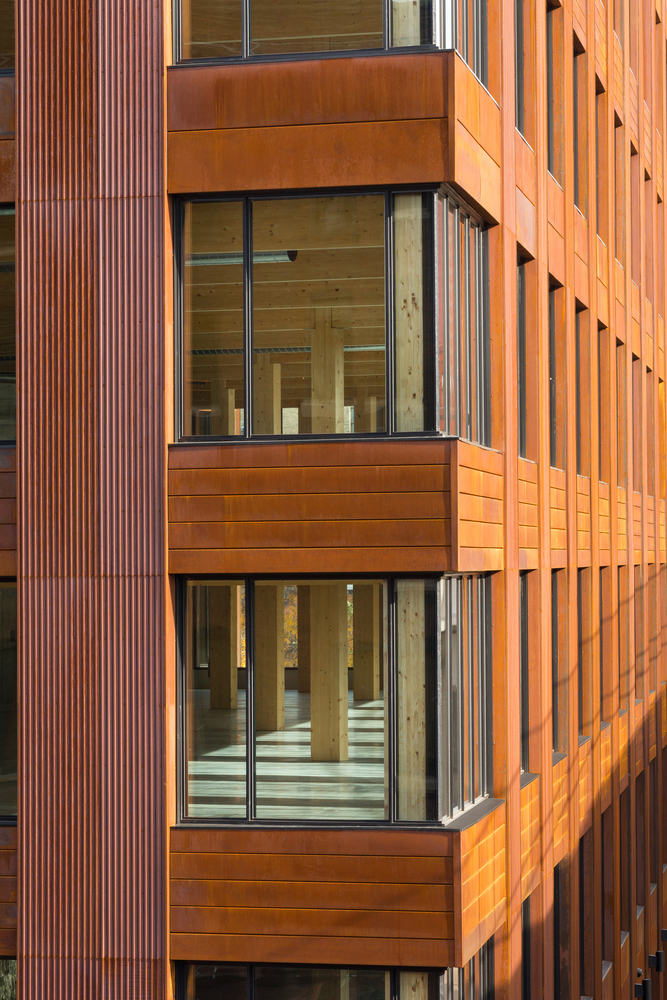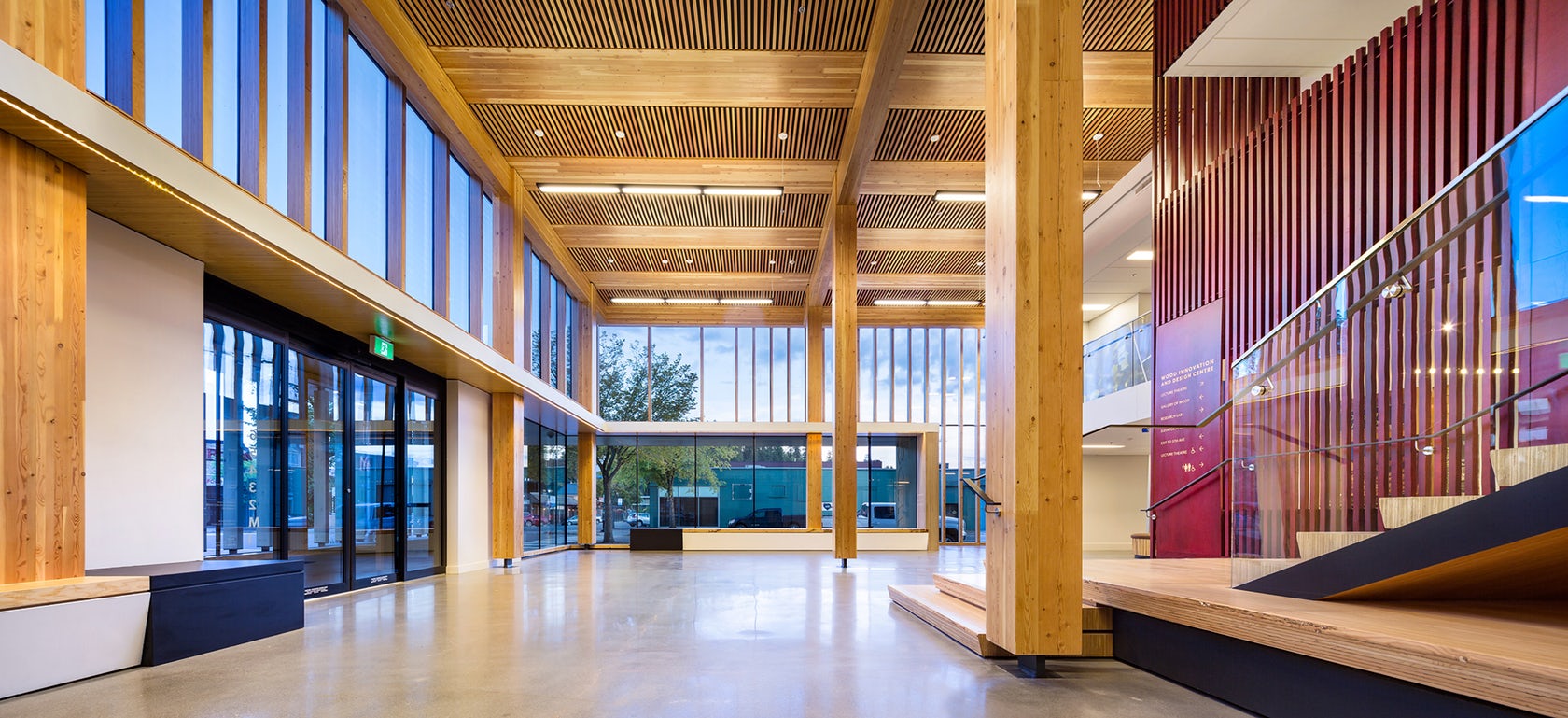Architects: Showcase your next project through Architizer and sign up for our inspirational newsletter.
In recent years, timber skyscrapers have been continually touted as one of architecture’s most exciting frontiers. The most fervent supporters of tall timber architecture push for a world in which steel and concrete fall to the wayside due to their steep environmental costs. This crucial decline would make room for wood to rise to unprecedented heights, and occupy new roles in the structural makeup of buildings.
But how does timber really measure up? Wood is a renewable resource that is less energy-intensive to extract than those construction giants, concrete and steel. Once extracted, it also requires reduced energy to process raw logs into engineered wood — a material form that can be easily harnessed for construction.
Finally, and perhaps most interestingly, the emissions that are naturally absorbed into trees through process of photosynthesis continues to be sequestered in the building’s wood fibers throughout its lifespan. This means that if built right, architecture can serve as a carbon sink for as long as it stands.
In this collection, take a look at three spectacular structures that serve as game changers in the realm of mass timber construction.


Built by Michael Green Architecture and DLR Group, T3 MINNEAPOLIS is a LEED Gold Certified building that became the largest timber tower in the US when it went up in 2016. Short for “Timber, Technology, Transit,” T3 is a seven-story, 220-square-foot-structure that harnesses timber construction to create an inviting office space that is differentiated from its steel and concrete counterparts; using the warmth of natural materials, the architects sought to create an interior space where individuals would truly enjoy working.
Despite the building’s boxy exterior appearance, T3 is anything but simple. It is clad in weathering steel and uses spruce-pine-fir NTL panels, spruce glulam post-and-beam framing, and a concrete topping slab to form its structure. The building’s structural bays are 20-feet by 25-feet, with timber beams spanning 25-feet and NLT panels spanning 20-feet. Notably, the architects chose to work with NLT because of its relative affordability compared to other structural timber systems.
The team behind Minneapolis T3 was also careful to extend environmentalism and efficiency to the project’s material selection and sourcing. A majority of the project’s lumber came from trees in the Pacific Northwest region that were killed by the mountain pine beetle, and all the wood used in the project is certified under Sustainable Forestry Initiative guidelines.
Located at The University of British Columbia’s Vancouver campus, at eighteen-stories Brock Commons stands as the world’s tallest mass timber structure. When first built, the architects hoped that this building would serve as a model for future timber constructions that are quick to build, cost effective and successful at sequestering greenhouse gas emissions in major cities. Brock Commons, for example, went up in just 66 days and uses timber to store an impressive 1,753 metric tons of carbon dioxide.
The prefabricated façade is arranged in a repeated pattern of vertical striations and features preinstalled windows. Finally, the cladding consists of 70-percent wood fibers and is present throughout both the interior and exterior of the structure.
In the past decade, British Columbia has been a leader in the implementation of building regulations that permit a growing use of wood in large, tall buildings. Built by Michael Green Architecture, the six-story Wood Innovation and Design Center serves as a critical demonstration of British Columbia’s growing expertise in such construction.
The primary structure is an innovative combination of glulam post-and-beam frame construction, a custom-designed CLT floor system, and CLT elevator, stair and mechanical shafts. Concrete was solely used for the ground floor slab and for the floor of the penthouse mechanical room. Finally, the design utilizes wood species found locally throughout the province, including Douglas-fir, Western red cedar, hemlock, pine, and spruce.
